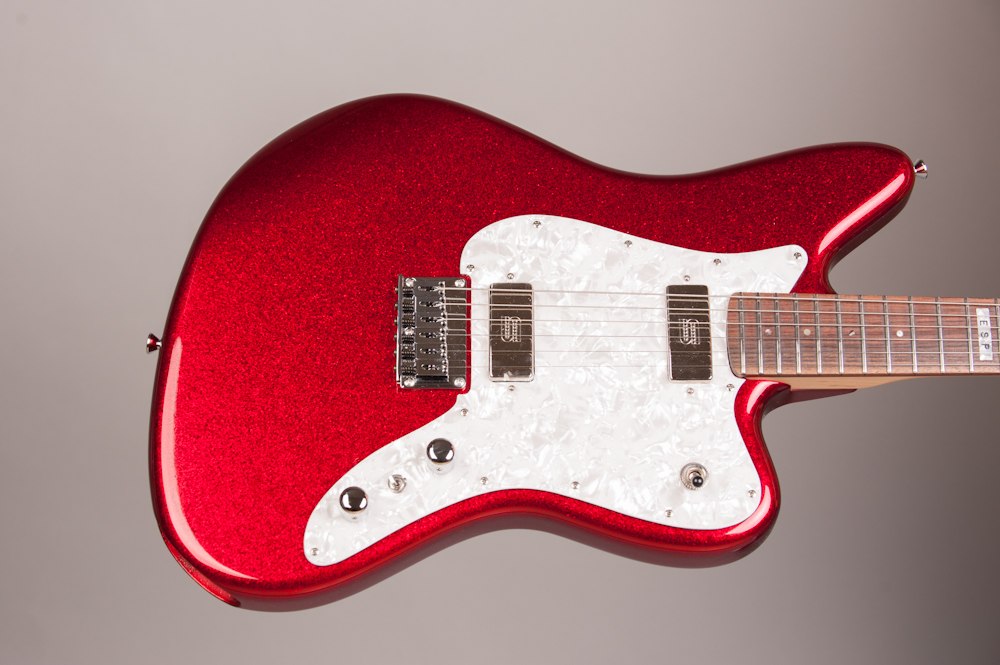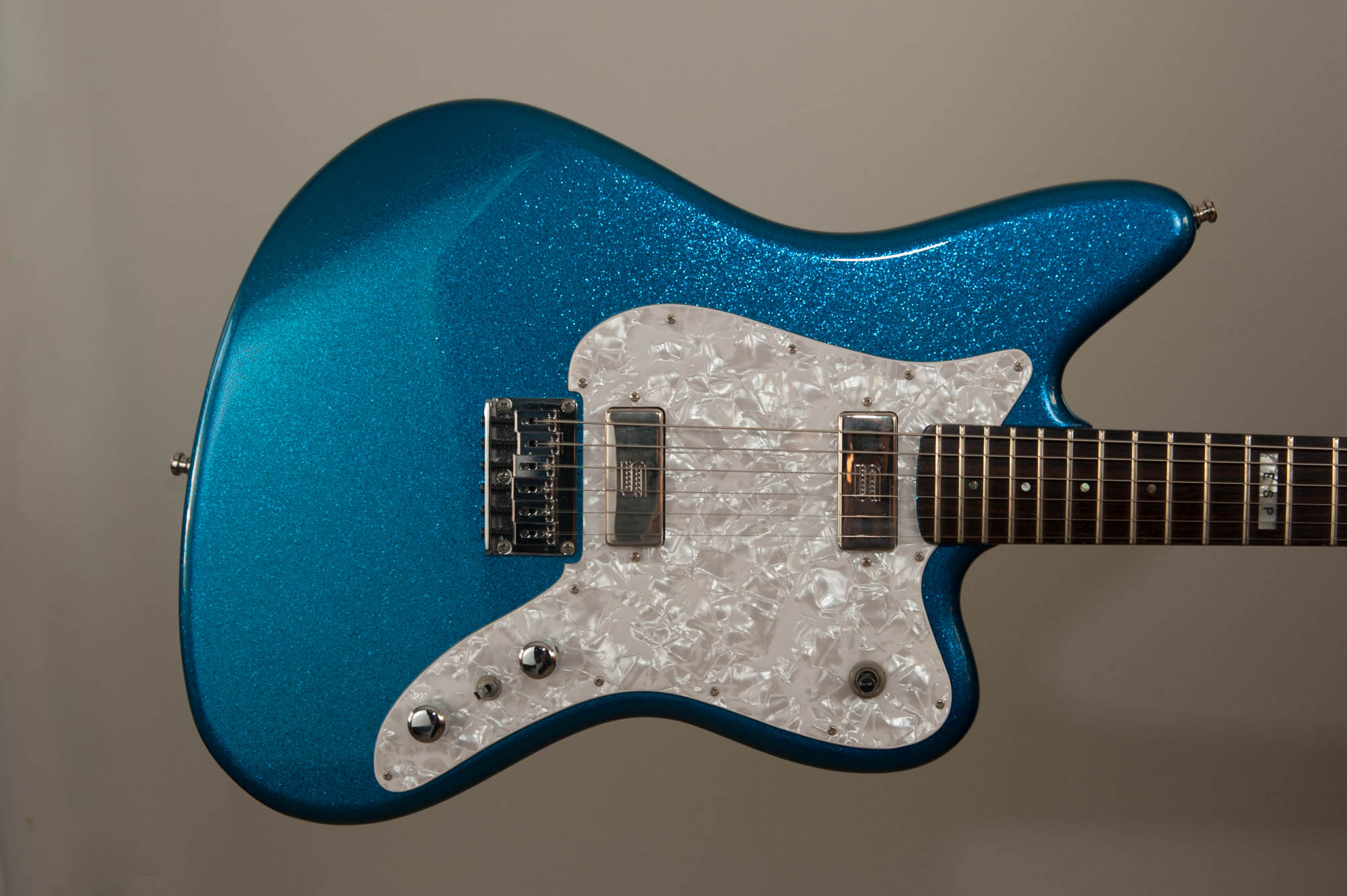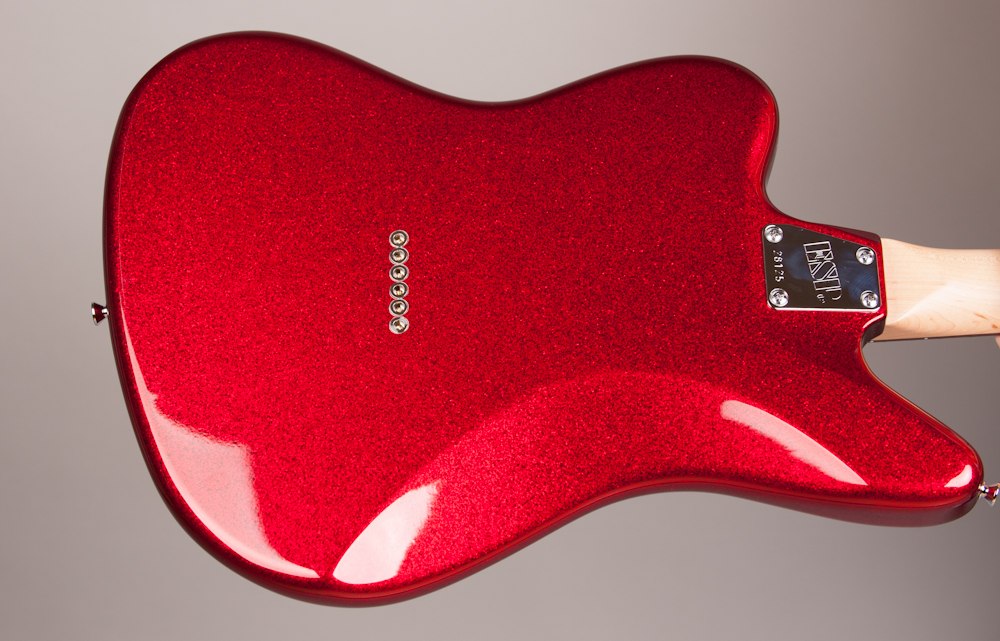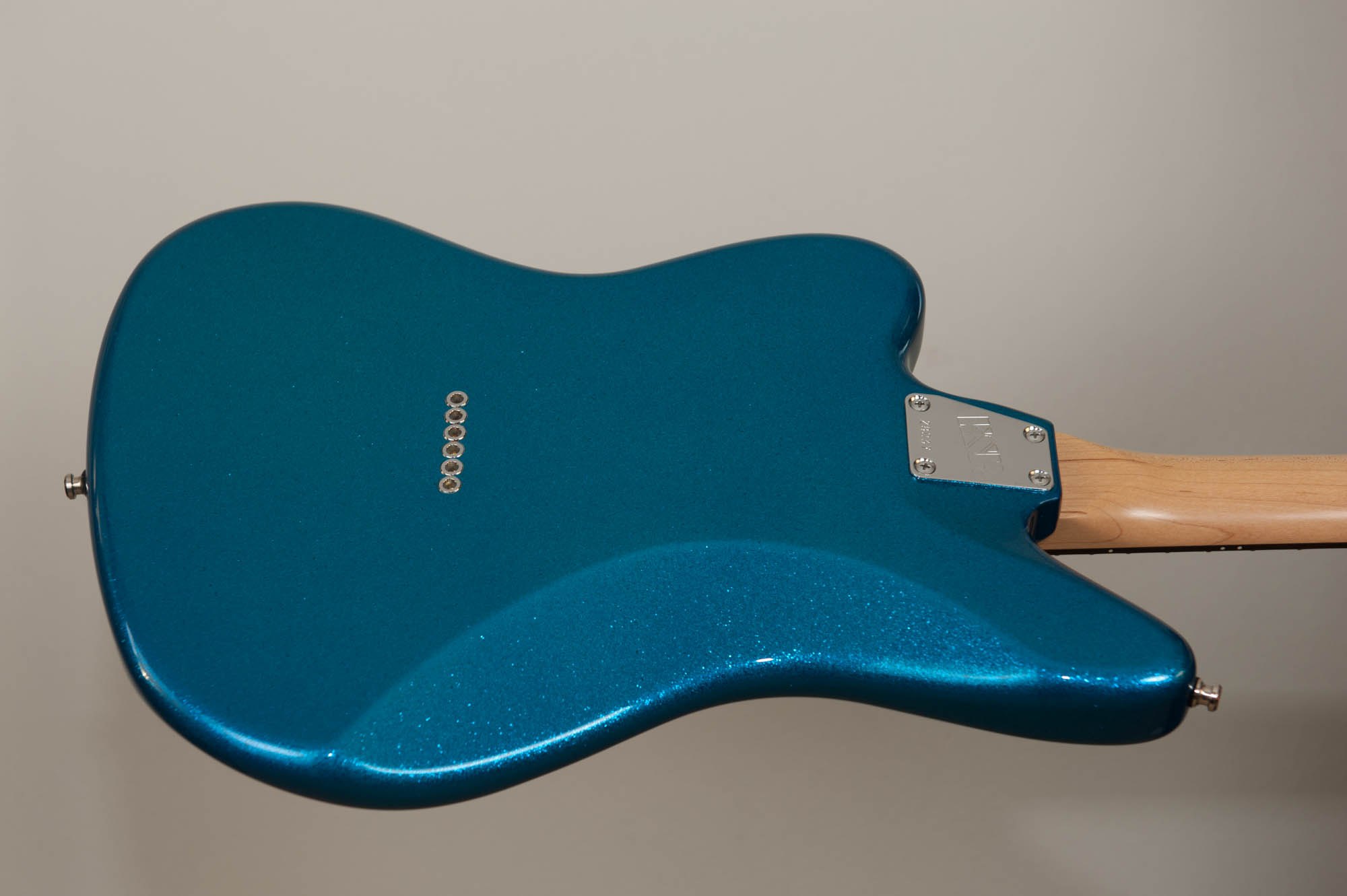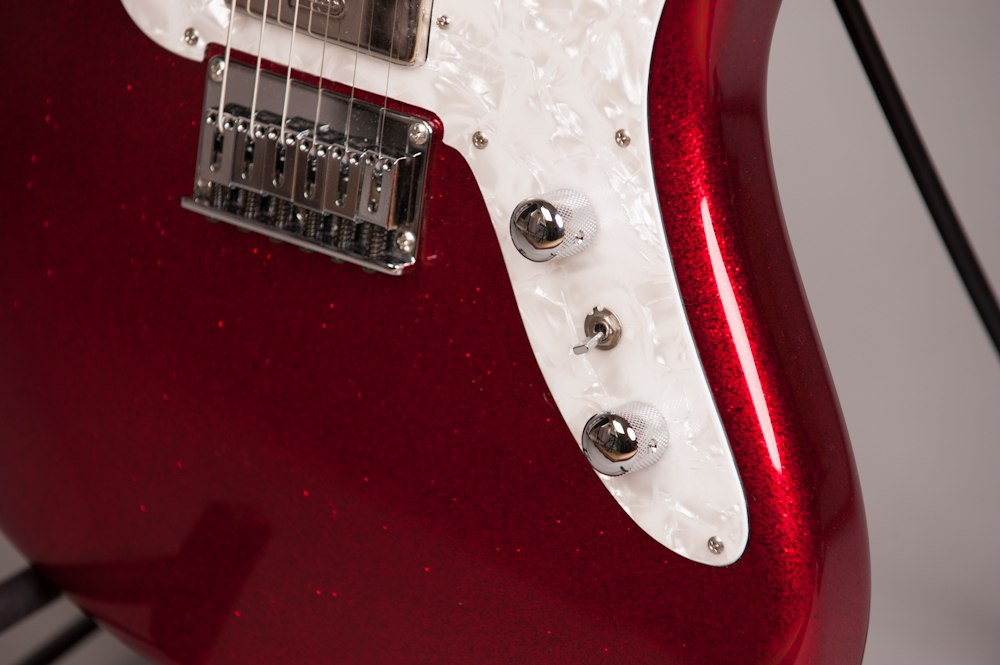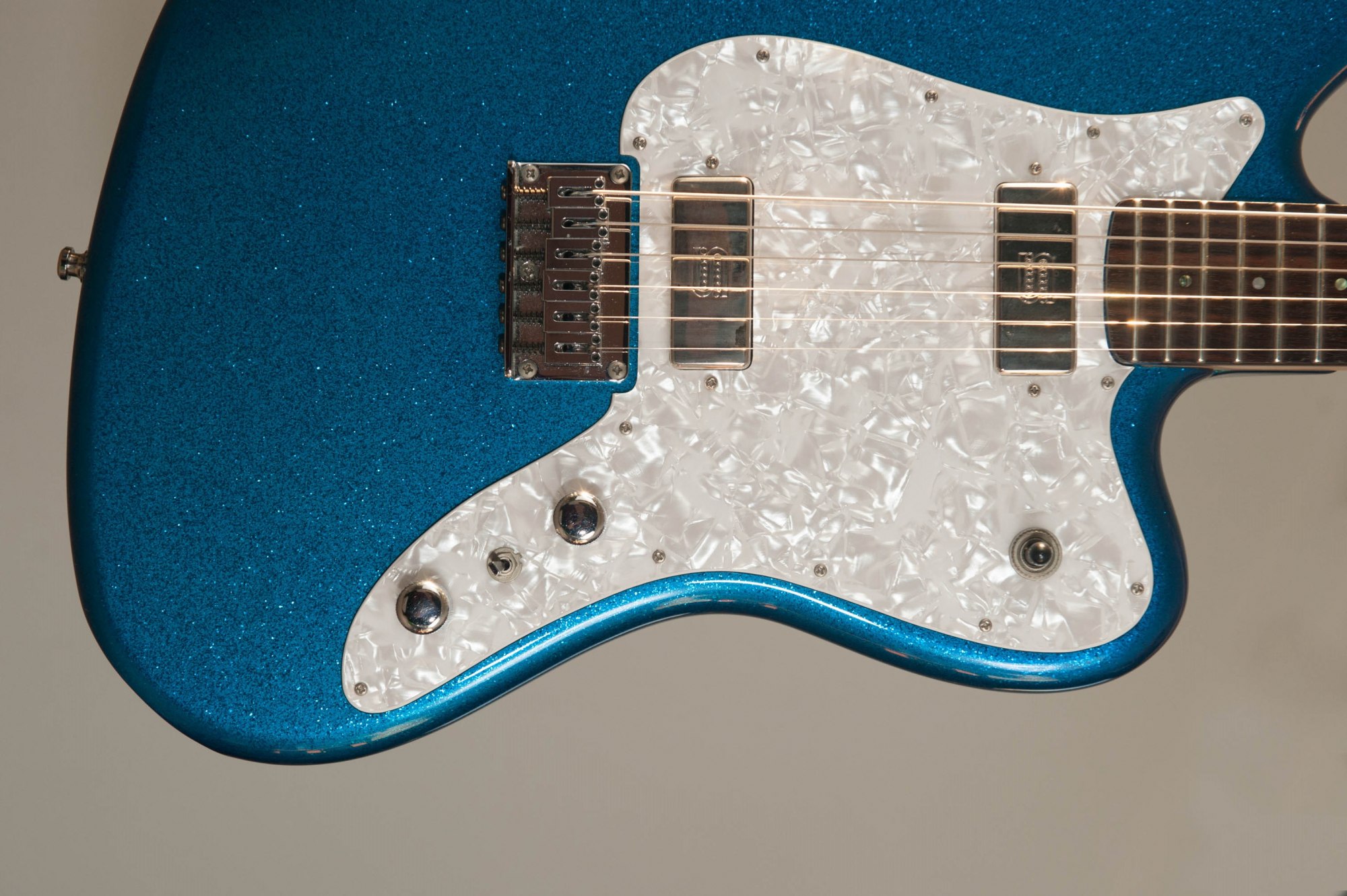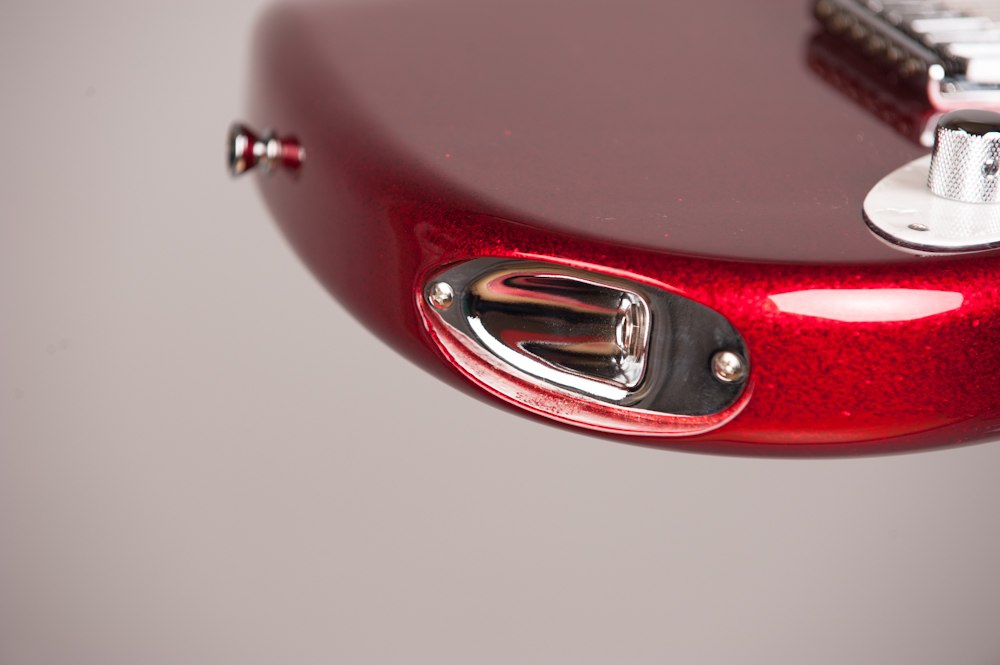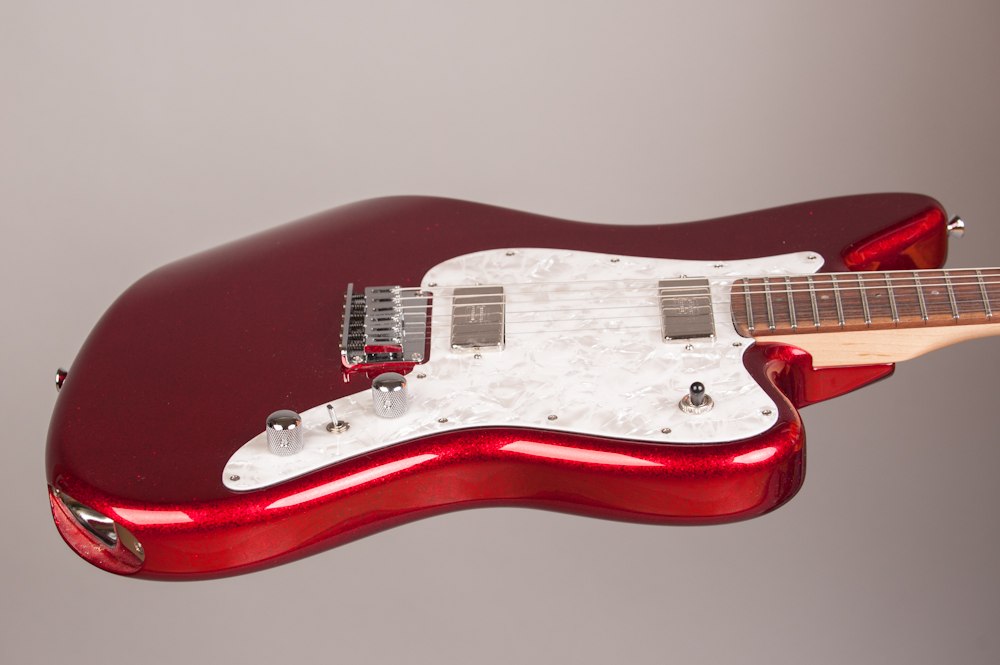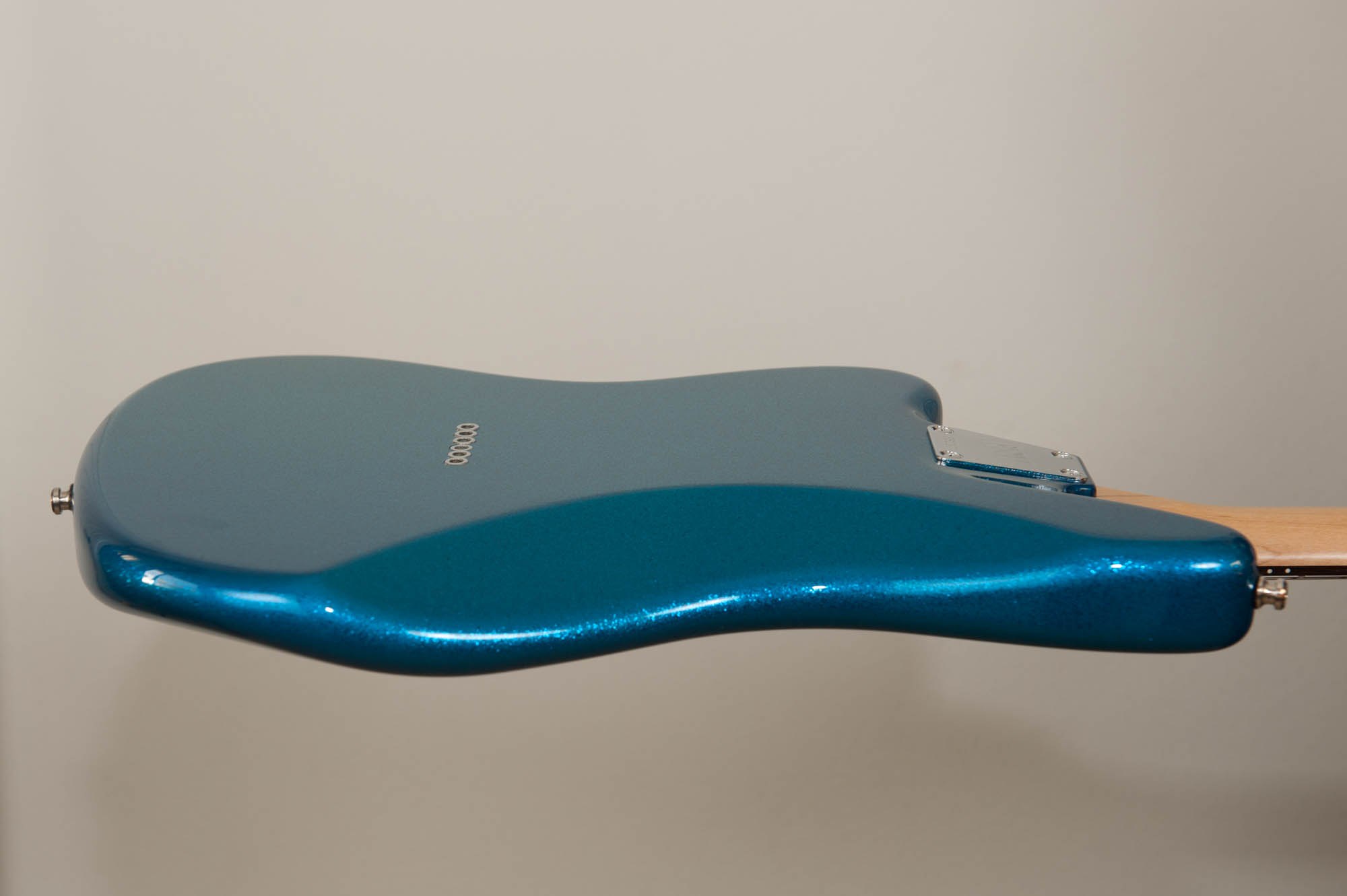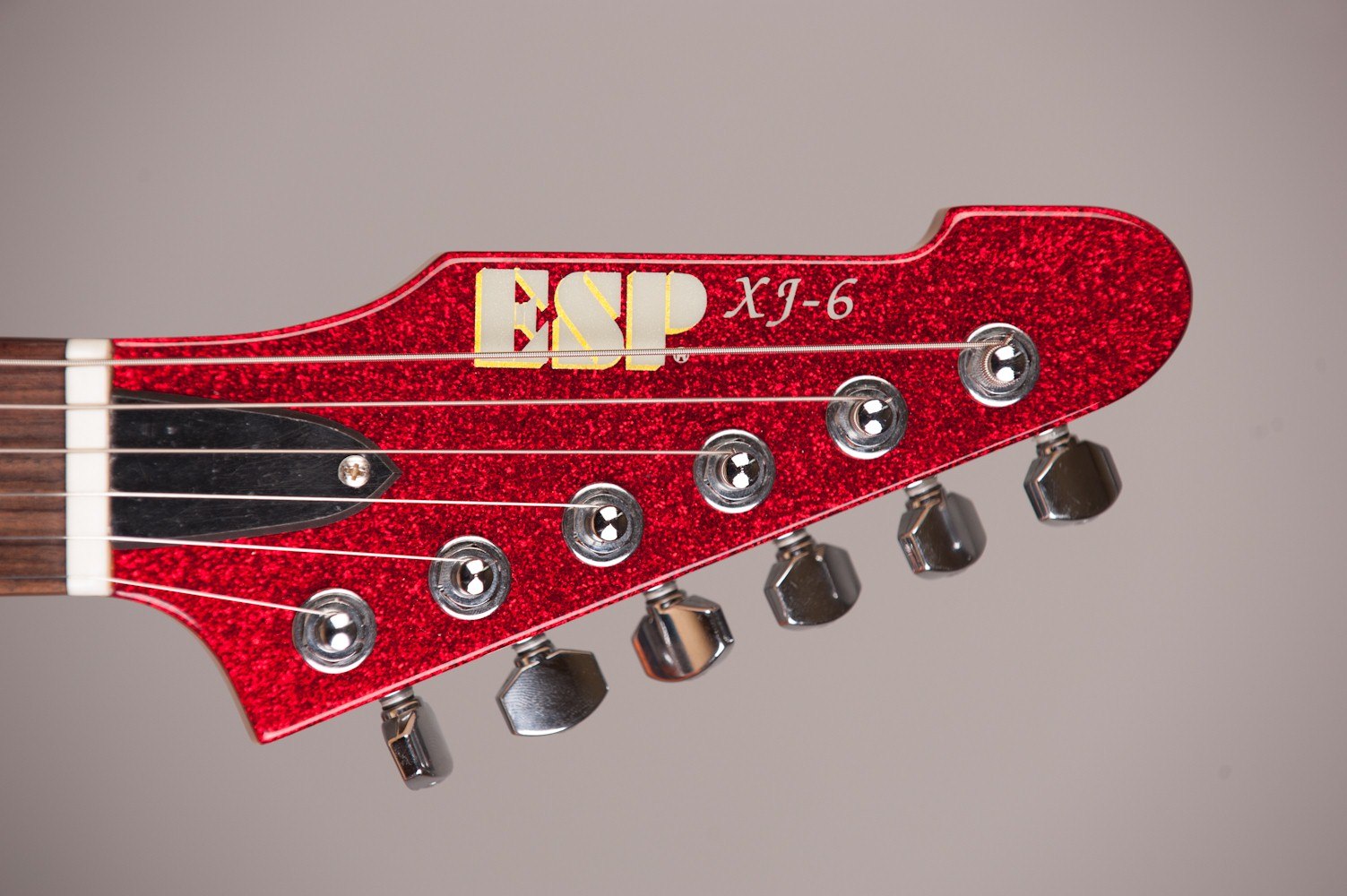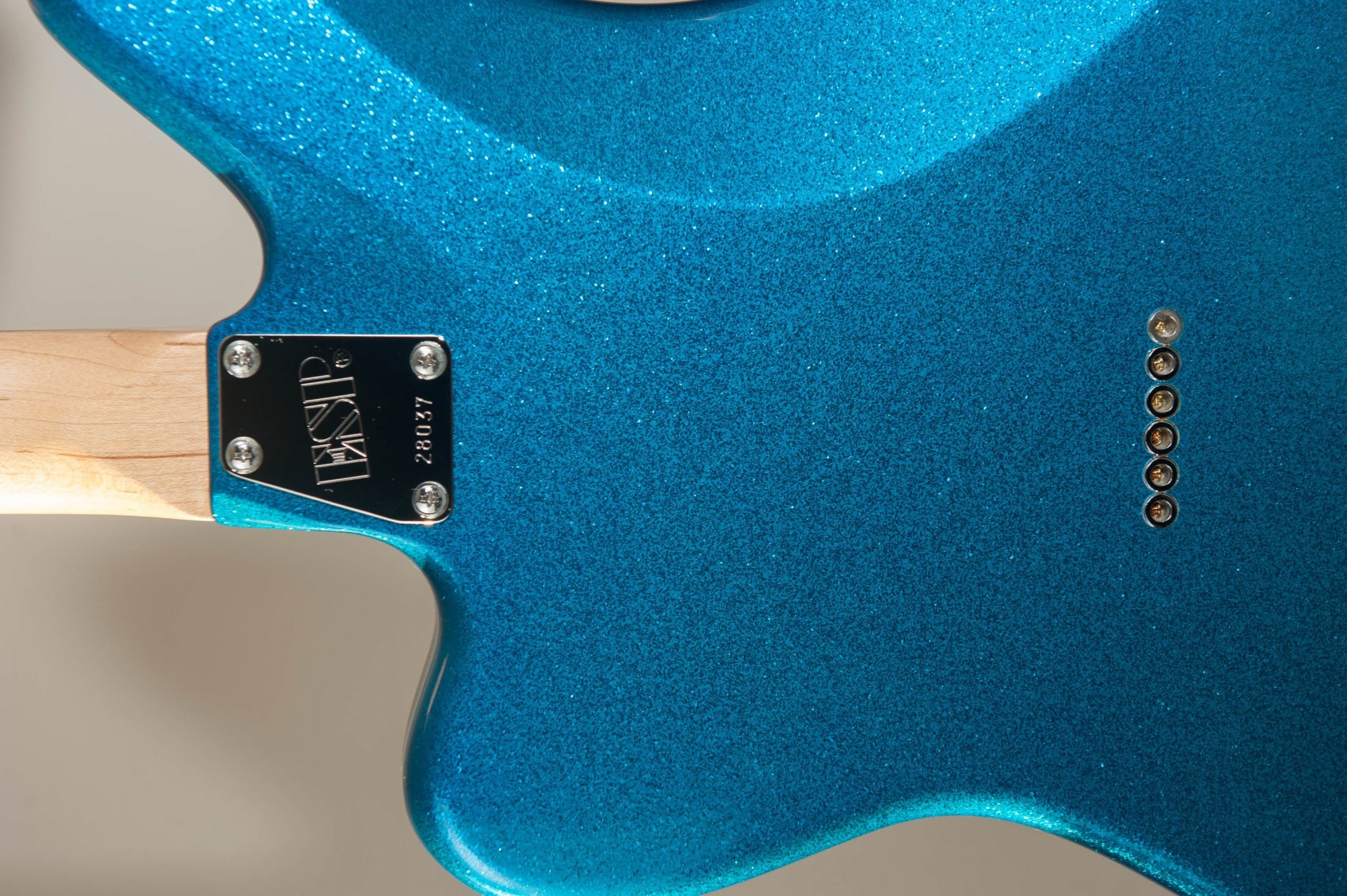ESP XJ-6
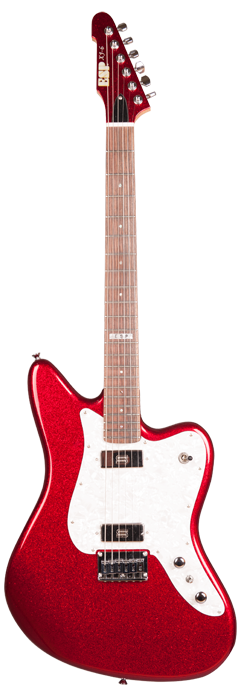 Year: 1998?
Year: 1998?
Finish: Red Sparkle; Blue Sparkle
Origin: Japan
Mods: Schaller straplocks
Acquired: October 2012 (red) & November 2013 (blue)
Still owned: Yes
The Story:
I like the sting of single-coils…but it can get too shrill. I like the thunder of humbuckers…but I don’t want it to get muddy, which it often does for me. Could the answer be mini-humbuckers? They were the secret weapon of Pete Townshend during the 70s, and the secret weapon of a friend in real life, too. I’ve always been mini-curious.
My secret-weapon friend had them in an ESP XJ-6, which were offered in the US from 1996 to 1998 with mini-humbuckers (according to Blue Book), then with full-size humbuckers only in Japan from 1998 to 2003. With the body design borrowed from a Fender Jaguar and named for the other Jaguar, it’s definitely the kind of aggressively unusual guitar that turns my head. It helped that they made some in bright metalflake finishes like gold, silver, blue, and red (along with more boring sunburst and color stains over ash). I mean, just by looks, this is a Dan guitar — so much that when I went poking around Warmoth thinking of building my own guitar from parts, I found myself creating fantasy guitars with Jaguar bodies in candy colors, routed for mini-humbuckers.
Flash foward to 2012. I get daily updates from music liquidator Hello Music, which sells limited numbers of high-end gear — I can only assume it’s old stock or discontinued stuff. One day, there’s a brand-new made-in-Japan XJ-6 in Sparkle Red on Hello Music. Wait, brand new? They don’t make them any more; neither ESP Japan nor US listed XJs on their websites, so it’s not a revival or a reissue. What’s the deal?
Turns out ESP found a bunch in their warehouse, but apparently not enough to do a full relaunch, so they liquidated them to small stores. They started popping up on eBay during the summer with prices around $1200, claiming an original MSRP of almost double that. Hello Music apparently sold a few other colors earlier in the year and I just didn’t see them. The price on this red one was a good deal, and it already said “Almost Sold Out.” OMG.
One problem. This is right after I had taken delivery on the Mira, but I already knew that relationship wasn’t going to work out. So Kat said “Well, if you’re selling the Mira, get the XJ while you can, if it seems like it will be a better fit.” (It didn’t hurt that Kat was not fond of the Mira and didn’t feel it was right for me anyway. She was, as usual, right.)
I quickly ordered the XJ-6. As soon as I placed my order, I reloaded the webpage — it said “Sold Out.” I literally got the last one.
I had forgotten how heavy my friend’s XJ was — mine weighs in at 8.9 lbs. That’s not crazy for Les Pauls, but alder Stratocasters are, on average, 7.75 lbs. The XJ looks like a Fender and it’s made of alder but it turns out it’s a big piece of alder. If the famously hourglass-shaped Stratocaster is built for sin, the offset-waisted Jaguar body is built for sin and speed. The finish is completely stunning, a very deep metalflake and a very rich red; the pearloid pickguard and simple chrome hardware do not distract. I also adore the recessed jack plate; not only is it invisible, it’s also angled in such a way that you can’t step on the cord and unplug the cable. Really smart design.
According to the official paperwork, the pickups are Seymour Duncan SM-3 mini-humbuckers (SD’s customer support team thought they would be SM-1s). The mini toggle switch between the volume and tone knobs selects the pickups in series, parallel, or coil-tapped. The serial and parallel doesn’t make a ton of difference to my ears yet — I wonder if it is used in concert with the main pickup selector switch and I just haven’t found the right combo — but the serial hums and single-coil tapped both sound distinctive and great. When I first plugged it in, I got really sweet clean tones and the perfect overdriven midrange crunchy punchy tone I was hoping for. I said to Kat, “That is the sound I have been looking for for 20 years.” So yeah, this one’s a keeper.
I wanted to call this guitar Mr. Sparkle, but my secret-weapon friend already claimed the name (and since his yellow/gold, it makes more Simpsons sense). So due to the red metalflake finish and sexy curves, I have dubbed this Jessica. As a friend quipped, “I’m not bad, I’m just played that way.” Far too true.
In 2013 I spotted a blue sparkle XJ-6 for sale on Reverb.com, and its owner was as big a stickler for care and maintenance as I am — it looked new and it came with the original hardshell case. I snagged it without much hesitation and put one of my other guitars up on consignment at a local shop. I have confirmed that the blue XJ-6 has an SM-1 in the neck and an SM-2 in the bridge; the toggle switch is a little wonky so I’m not getting the middle position at the moment, but I might have broken that when I opened it up and inspected it. Since the red one has a matched set of SM-3s, that means I have the “same guitar” but with different voices — and that’s awesome.
The sad epilogue is that people now think these guitars are worth far more than they actually are. You’ll see some people say “Custom Shop” when they are in fact merely production models for about three years. The confusion comes from the back of the headstock being stamped “ESP Custom Guitars.” That does not mean this was built in the Custom Shop in Japan; CS guitars are all fully handmade, and this model appears in ESP’s 1997 catalog, in which a full page notes that XJ-6s were available in sparkle finishes as well — to anybody who wanted them.
So people are asking multiple thousands of dollars on eBay for a quality guitar that is, honestly, worth closer to $700 USD. You could reasonably build one from top-shelf parts for that, even with a sparkle finish! I know the market will bear whatever it will bear, but if you spot sky-high prices, beware — the seller either thinks they have something “custom” that they don’t really have, or they are knowingly misrepresenting what they’re selling, and they hope you might be the sucker.
